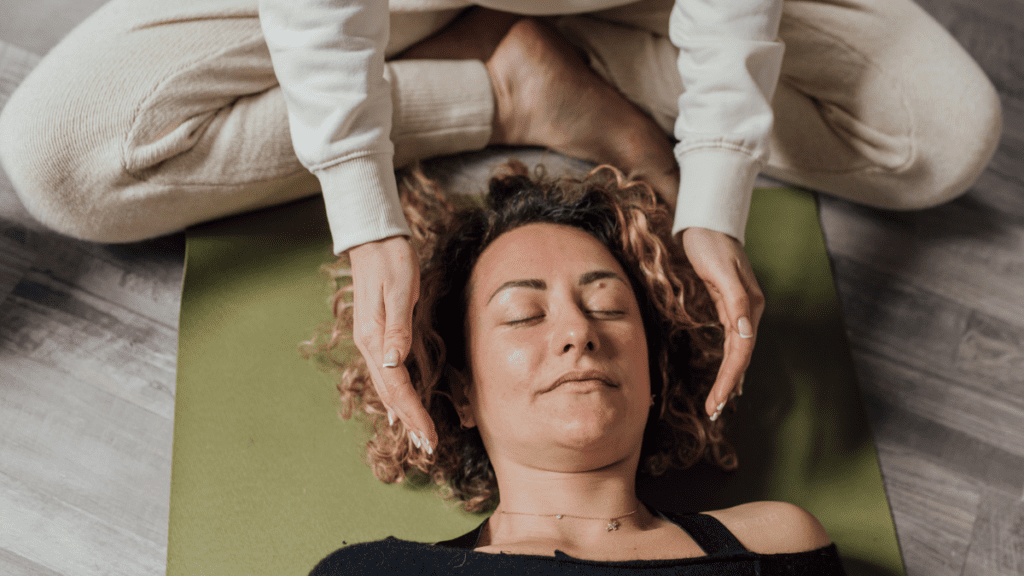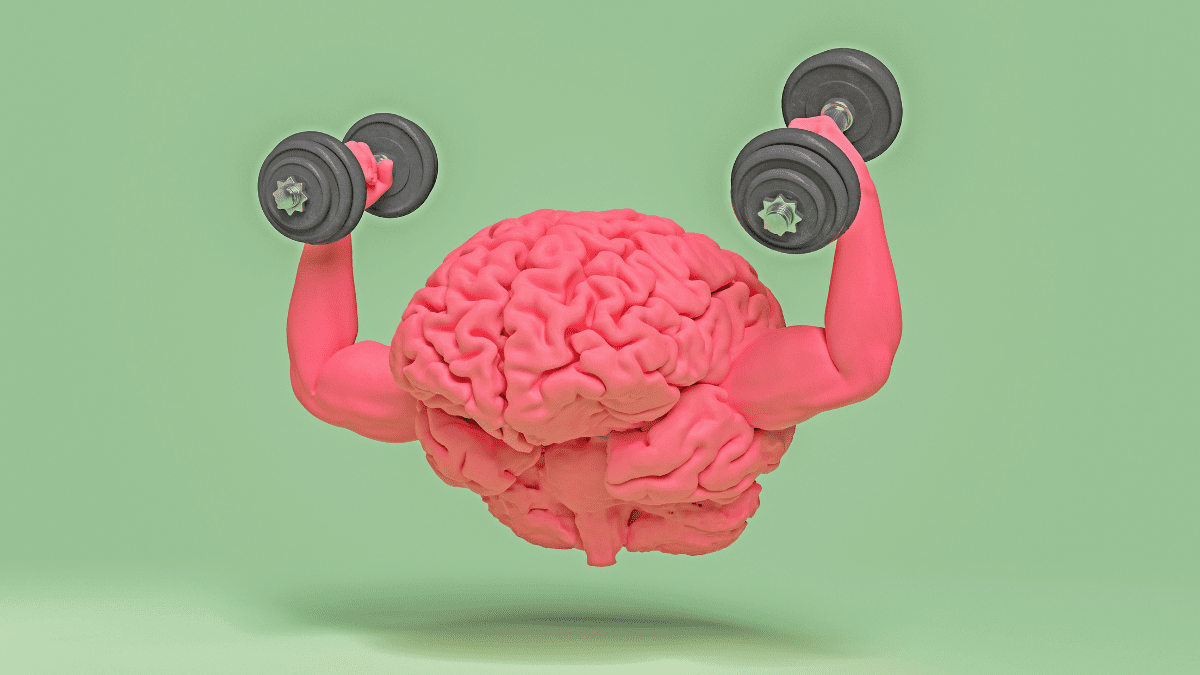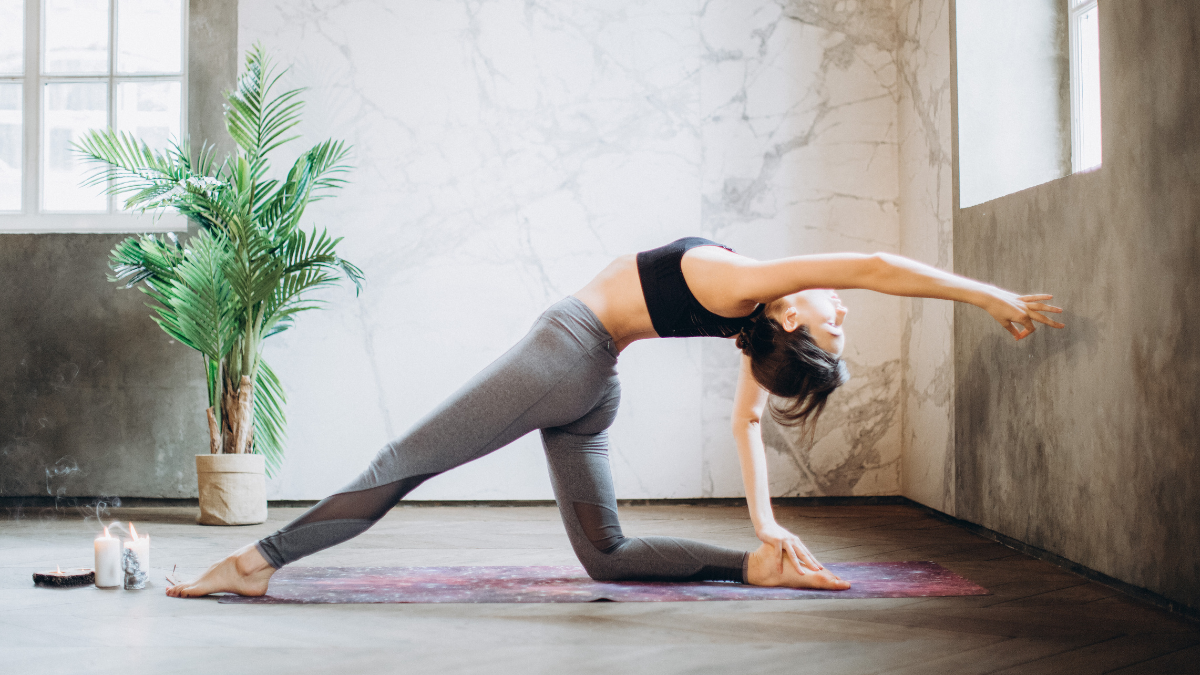Somatic Yoga: Awaken Your Body, Break Free from Pain
Struggling with pain and stiffness? Somatic Yoga offers gentle, mindful movements to retrain your body, release tension, and restore mobility. Unlock deep healing and feel truly free in your body.

Somatic yoga is a gentle practice that helps release tension, improve mobility, and reconnect the mind and body. Unlike traditional yoga, it focuses on slow, mindful movements rather than static poses. This approach retrains the nervous system, allowing muscles to relax and move with ease.
Modern life often leads to stiffness and discomfort. Hours of sitting, repetitive movements, and stress create patterns of tension in the body. Over time, these habits can result in chronic pain and limited flexibility. Somatic yoga offers a simple yet powerful way to reset these patterns and restore natural movement.
If stress is adding to your discomfort, combining this practice with relaxation techniques can provide deeper relief. Learn more about yoga for stress relief here.
In this guide, you’ll discover how somatic yoga works, its unique benefits, and how to start practicing today. Let’s begin!
What Is Somatic Yoga?
Somatic yoga is a mindful movement practice that helps rewire the body for ease and relaxation. It blends slow, conscious movements with deep awareness to release tension and improve mobility. Unlike traditional yoga, it focuses less on holding poses and more on retraining movement patterns.
The practice is rooted in neuromuscular re-education. Many people develop tightness and discomfort from daily habits or past injuries. Over time, the brain adapts to these patterns, making stiffness feel normal. Somatic yoga helps reverse this by teaching the body new ways to move.
This gentle approach is highly effective for pain relief and mobility. It’s also a powerful tool for nervous system regulation. To understand more about how movement influences the brain, check out this in-depth guide.
By practicing somatic yoga regularly, you can reconnect with your body, ease tension, and move with greater freedom. In the next section, we’ll explore how it helps heal pain and discomfort.
How Somatic Yoga Heals Pain and Tension
Chronic pain often comes from habitual movement patterns. Over time, stress, injuries, and repetitive motions create muscle tension. The body adapts, making tightness feel normal. This can lead to discomfort, stiffness, and even mobility issues.
Somatic yoga helps by retraining the nervous system. It teaches the brain to release unconscious tension through slow, mindful movements. Unlike stretching, it works from within, allowing muscles to reset and relax naturally. This process is called pandiculation, a technique that helps restore flexibility and ease.
The practice also supports nervous system regulation. Stress and trauma often leave the body in a constant state of tension. Through gentle movement and breath awareness, somatic yoga calms the system, helping you feel more at ease. To learn more about how mindful movement reduces chronic pain, explore this expert-backed resource.
By practicing regularly, you can break free from pain, restore mobility, and move with greater freedom. In the next section, we’ll compare somatic yoga to traditional yoga and explore key differences.
Somatic Yoga vs. Traditional Yoga: Key Differences
Many people believe all yoga styles work the same way. However, somatic yoga takes a different approach. It focuses on movement awareness rather than flexibility or strength.
Traditional yoga follows structured poses. It emphasizes alignment, breath control, and endurance. Some poses require holding positions for long periods, which can feel intense. In contrast, somatic yoga movements are slow and intuitive. The goal is not to stretch but to release muscle tension through gentle, mindful motion.
Another key difference is how each practice affects the nervous system. Traditional yoga can sometimes push the body into discomfort. Somatic yoga works in harmony with natural movement patterns, preventing strain. It allows the body to reset without force. To learn more about how gentle movement relieves tension and pain, explore this research-backed article.
Both styles offer unique benefits. However, somatic yoga is ideal for those recovering from injuries, managing chronic pain, or seeking a deeper connection with their body. In the next section, we’ll explore simple exercises to help you get started.
Beginner-Friendly Somatic Yoga Practices
Starting with somatic yoga is simple. The movements are gentle, slow, and easy to follow. Unlike traditional yoga, there is no need to force stretches or hold difficult poses. Instead, the focus is on awareness and releasing tension.
A great way to begin is by practicing small, mindful movements that improve body awareness. These exercises help retrain the nervous system and reduce tightness. To explore why slow, intentional movement enhances flexibility and relaxation, check out this expert guide.
Here are three beginner-friendly somatic yoga exercises:
1. Pandiculation for Muscle Release
- Lie on your back in a comfortable position.
- Slowly contract a muscle group, such as your shoulders or legs.
- Hold for a few seconds, then release completely.
- Breathe deeply and feel the tension fade away.
2. Pelvic Tilts for Lower Back Relief
- Lie on your back with your knees bent.
- Gently tilt your pelvis forward, then backward.
- Move slowly, focusing on the sensation in your lower back.
- Repeat for a few minutes, allowing stiffness to soften.
3. Shoulder Rolls for Neck and Upper Body Tension
- Sit or stand comfortably with your arms relaxed.
- Slowly lift your shoulders toward your ears.
- Roll them backward in a circular motion, then forward.
- Continue for a minute, breathing deeply with each movement.
These simple exercises bring immediate relief. They also help reconnect your body and mind. With regular practice, somatic yoga can improve flexibility, reduce pain, and restore natural movement.
In the next section, we’ll explore who can benefit most from this practice.

Who Can Benefit from Somatic Yoga?
Somatic yoga is for anyone seeking relief from tension, stiffness, or chronic pain. It is especially helpful for those who feel disconnected from their bodies. The practice restores natural movement and promotes deep relaxation.
Many people turn to slow, mindful exercises to ease muscle pain. Unlike intense workouts, these movements do not strain the body. They help release built-up tension and improve flexibility. To understand how gentle movement can reduce chronic pain, explore this expert resource.
Here are a few groups that may benefit most from somatic yoga:
1. People with Chronic Pain
- Helps reduce tension and stiffness.
- Teaches the body to move without discomfort.
- Supports nervous system regulation for pain relief.
2. Those Recovering from Injuries
- Aids in gentle rehabilitation.
- Restores mobility without strain.
- Prevents the body from overcompensating with poor movement patterns.
3. Anyone Experiencing Stress or Anxiety
- Calms the nervous system through slow movement.
- Encourages deep breathing and body awareness.
- Helps release emotional tension stored in muscles.
4. Desk Workers and Sedentary Individuals
- Counteracts stiffness from long hours of sitting.
- Improves posture and spinal alignment.
- Prevents muscle imbalances caused by repetitive movements.
With regular practice, somatic yoga can help anyone move with more ease and comfort. In the next section, we’ll explore simple ways to start practicing at home.
How to Get Started with Somatic Yoga
Starting somatic yoga at home is easy. You do not need special equipment or advanced skills. The key is to move slowly, listen to your body, and focus on awareness.
A great first step is to explore gentle body movements that improve mobility. These exercises help retrain the nervous system and restore natural movement patterns. To learn more about why slow, mindful exercises enhance flexibility and coordination, check out this expert-backed article.
Here are a few simple ways to begin your somatic yoga journey:
1. Create a Comfortable Space
- Choose a quiet area with enough room to move.
- Use a soft mat or blanket for extra comfort.
- Wear loose, breathable clothing for ease of movement.
2. Start with Small, Slow Movements
- Focus on gentle stretches and mindful motions.
- Move with intention, without forcing any position.
- Pay attention to how your muscles respond to each movement.
3. Practice Breath Awareness
- Breathe deeply to release tension.
- Inhale slowly through the nose, expanding the belly.
- Exhale fully, allowing your body to relax.
4. Follow a Guided Somatic Yoga Session
- Use online videos, books, or audio guides.
- Follow instructors who emphasize awareness and relaxation.
- Adjust movements to suit your comfort level.
Starting with just a few minutes a day can make a difference. With time, somatic yoga can help you move with ease and feel more connected to your body. In the next section, we’ll wrap up with key takeaways and final thoughts.
Awaken Your Body
Practicing somatic yoga regularly can transform how you feel. It helps release tension, restore movement, and bring awareness to every part of your body. Unlike traditional workouts, this gentle practice encourages relaxation instead of strain.
Many people experience lasting relief by using mindful movement techniques that ease chronic stiffness. These exercises work with the nervous system to retrain muscle patterns.
Here are key takeaways to remember:
1. Listen to Your Body
- Move slowly and with awareness.
- Stop if you feel discomfort or strain.
- Allow each motion to feel natural and effortless.
2. Be Consistent
- Practice a few minutes daily for better results.
- Small movements can create big changes over time.
- Stay patient and trust the process.
3. Focus on Relaxation
- Deep breathing enhances the benefits of somatic yoga.
- Let go of stress as you move.
- Shift your attention inward to fully experience each moment.
4. Keep Learning
- Explore different exercises to find what works best.
- Follow trusted instructors who emphasize awareness and control.
- Stay curious and open to new ways of moving.
By making somatic yoga a part of your routine, you can move with greater ease and freedom. Your body will feel lighter, and your mind will be more at peace.

Embrace Healing Through Yoga
The journey with somatic yoga is more than just movement. It is a path to reconnecting with your body, easing pain, and restoring natural balance. Each session brings new awareness, helping you feel lighter and more at ease.
Many people experience deep relief by practicing slow, mindful exercises that improve body awareness. These movements allow the nervous system to reset and release long-held tension. To explore how gentle movement supports long-term pain relief, check out this science-backed article.
Here are a few ways to deepen your practice:
1. Set an Intention
- Approach each session with patience and curiosity.
- Focus on how your body feels rather than the outcome.
- Allow yourself to move without judgment.
2. Stay Present
- Tune into every sensation as you move.
- Notice small shifts in tension and relaxation.
- Avoid rushing through exercises.
3. Honor Your Progress
- Every movement, no matter how small, makes a difference.
- Celebrate moments of ease and comfort.
- Trust your body’s ability to heal.
4. Keep Exploring
- Try new exercises to discover what works best.
- Learn from experienced teachers and guided sessions.
- Continue refining your awareness with each practice.
Somatic yoga is a lifelong practice that nurtures both body and mind. By committing to small, mindful movements, you can break free from tension and rediscover the joy of effortless motion.
The Long-Term Benefits of Somatic Yoga
Practicing somatic yoga offers more than just temporary relief. It helps you build lasting habits of body awareness, mobility, and relaxation. Over time, these benefits extend far beyond your yoga mat, impacting your daily life.
Many practitioners notice long-term improvements in flexibility, posture, and stress levels. These benefits stem from slow, deliberate movements that promote lasting physical change.
Here’s what you can expect with continued practice:
1. Improved Posture
- Somatic yoga helps correct misalignments caused by daily habits.
- It strengthens muscles and improves spinal alignment.
- Regular practice can prevent future aches and stiffness.
2. Reduced Stress and Anxiety
- Slow movements help activate the body’s relaxation response.
- Deep breathing practices further calm the nervous system.
- Consistent practice reduces the effects of chronic stress.
3. Enhanced Mobility and Flexibility
- The focus on mindful movement restores natural range of motion.
- It helps release tight muscles and joints.
- Over time, it leads to greater freedom of movement.
4. Greater Mind-Body Connection
- Somatic yoga encourages awareness of both body and mind.
- You’ll learn to recognize tension and release it before it builds up.
- This practice helps you stay present and mindful throughout the day.
By committing to somatic yoga, you create a sustainable practice that nourishes your body and mind for the long term. In the next section, we’ll summarize key points to help you continue your journey.
Final Thoughts
Somatic yoga is more than just a movement practice. It is a powerful tool for healing, self-awareness, and long-term well-being. By focusing on slow, intentional movements, you can release tension, improve mobility, and reconnect with your body in a deeper way.
Many people find relief through gentle exercises that support nervous system regulation. These movements help retrain the brain and body to move with ease.
Here are the key takeaways to remember:
1. Move with Awareness
- Pay attention to how your body feels with each movement.
- Avoid pushing into discomfort or forcing positions.
- Let movement be a process of discovery.
2. Be Patient with Progress
- Small, mindful movements create lasting change.
- Consistency is more important than intensity.
- Trust your body’s ability to heal.
3. Stay Committed to the Practice
- Even a few minutes a day can make a difference.
- The benefits extend beyond the mat into daily life.
- Keep exploring new ways to move and release tension.
Somatic yoga is a lifelong journey. With regular practice, you will move more freely, feel less pain, and experience a greater sense of well-being. Start today, listen to your body, and embrace the power of mindful movement.







